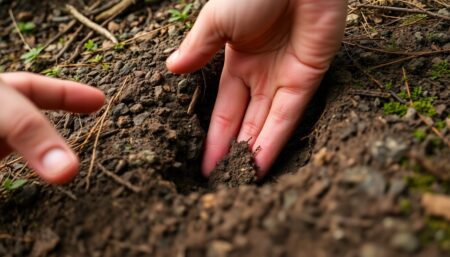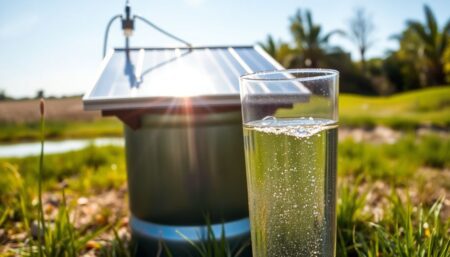Have you ever wondered how you could contribute to the preservation of our planet while also ensuring a steady supply of water for your home? The answer might be simpler than you think: water harvesting through DIY rainwater collection systems. This article, ‘DIY Rainwater Collection Systems for Self-Sufficiency’, is your comprehensive guide to understanding, designing, and implementing these sustainable water sources, enabling you to live off-grid and reduce your environmental footprint.
First, let’s agree on the importance of water in our daily lives. Did you know that the average person uses around 80-100 gallons of water per day (EPA)? That’s a significant amount, especially considering that only 3% of the world’s water is fresh (USGS). Now, imagine if you could collect and reuse a substantial portion of that water, all while helping to conserve this precious resource. Sounds like a win-win, right?
Now, let’s make a promise. By the end of this article, you will have a solid understanding of rainwater harvesting, its benefits, and the various systems you can create to collect and store water. We’ll delve into the science behind it, explore different system designs, and provide step-by-step guides to help you build your own. Whether you’re a seasoned sustainability enthusiast or a curious beginner, this article promises to equip you with the knowledge and confidence to create your own off-grid water source.
But before we dive into the nitty-gritty, let’s take a sneak peek at what’s in store. We’ll start by exploring the concept of water harvesting and its role in sustainable living. Then, we’ll discuss the benefits of going off-grid with your water supply, from financial savings to environmental conservation. Next, we’ll delve into the different types of rainwater collection systems, their pros and cons, and how to choose the right one for your needs. Finally, we’ll provide detailed, step-by-step guides to help you build and maintain your own system. So, are you ready to take control of your water supply and embrace a more sustainable way of life? Let’s get started!
Harvesting the Sky: Sustainable Water Solutions for Off-Grid Living
Imagine a world where water, the very essence of life, isn’t a scarce resource but a freely available gift from the sky. This is the promise of harvesting the sky, a sustainable water solution that’s gaining traction, especially among those living off the grid. Picture this: a simple, elegant system that collects, filters, and stores rainwater, all while being kind to the environment. No more relying on dwindling groundwater reserves or expensive, energy-intensive desalination processes. Instead, we’re talking about a symbiotic relationship with nature, where we respectfully borrow what we need from the sky and give back by preserving the planet’s delicate ecosystems. This isn’t just about survival; it’s about thriving. It’s about creating resilient communities that can withstand the harshest droughts and the most unpredictable weather patterns. It’s about empowering people to take control of their water needs, to live sustainably, and to pass on a healthier planet to future generations. So, let’s embrace the challenge, let’s innovate, and let’s harvest the sky together.

Understanding Rainwater Harvesting
Rainwater harvesting, a timeless practice, is gaining renewed significance in our quest for sustainable living. The concept is simple yet profound: collecting and storing rainwater for later use, rather than letting it run off into the ground or sewers. This water, pure and free from the sky, can be a boon for both urban and rural communities, especially in the face of the global water crisis. The benefits of rainwater harvesting are manifold. Firstly, it eases the burden on municipal water supplies, reducing the demand on overstretched infrastructure. Secondly, it provides a clean, safe water source, free from the contaminants often found in groundwater. This is particularly crucial in areas with poor water quality or where waterborne diseases are prevalent. Moreover, rainwater harvesting can help mitigate flooding by allowing water to soak into the ground, reducing runoff. The global water crisis, marked by scarcity, pollution, and unequal access, underscores the need for innovative solutions like rainwater harvesting. According to the United Nations, around 2.2 billion people lack access to safely managed drinking water, and by 2050, up to 5.7 billion people could be living in areas where water is scarce for at least one month of the year. Rainwater harvesting can help alleviate this pressure, providing a reliable, off-grid water supply. The practice is not without its challenges, however. It requires initial investment in infrastructure, such as tanks and gutters, and ongoing maintenance. Moreover, it may not be suitable for all climates or landscapes. But with careful planning and implementation, rainwater harvesting can be a powerful tool in our fight against water scarcity. In conclusion, rainwater harvesting is not just a clever way to save water; it’s a crucial step towards sustainable living. It eases pressure on water supplies, provides clean water, and can help mitigate flooding. As the global water crisis deepens, it’s practices like these that will help us weather the storm.

Assessing Your Water Needs
Assessing your annual water needs is a crucial first step in designing an effective rainwater collection system. This process helps you understand how much water you use in a year and how much you can potentially harvest from rainfall. Let’s dive into a simple yet comprehensive method to calculate your annual water needs.
The first factor to consider is your family size. Water usage varies greatly depending on the number of people in your household. On average, each person uses about 80-100 gallons of water per day. So, if you have a family of four, you’re looking at around 320-400 gallons of water used daily.
Next, let’s consider your water usage patterns. This includes everything from drinking and cooking to showering, laundry, and watering your plants. To get a more accurate estimate, you can track your water usage for a week or two. Make note of how often you run your dishwasher, do laundry, water your lawn, and so on. This will give you a better understanding of your daily water usage.
Another important factor is your local rainfall data. The amount of rain your area receives annually can significantly impact the amount of water you can harvest. You can find this data from your local weather station or online resources. Once you have this information, you can calculate the potential water yield from your roof. Here’s a simple formula: Potential Water Yield (in gallons) = Roof Area (in square feet) x Rainfall (in inches) x 0.623.
Finally, let’s put all these factors together. First, calculate your annual water needs based on your family size and usage patterns. Then, estimate the potential water yield from your roof using the rainfall data. Comparing these two figures will give you an idea of how much water you can harvest and how much you’ll still need to source from other means.
Assessing your annual water needs is not just about designing an effective rainwater collection system. It’s also about understanding your water footprint and finding ways to reduce it. By knowing how much water you use, you can make informed decisions about your water usage and contribute to a more sustainable future.

Choosing the Right Rainwater Collection System
Choosing the right rainwater collection system is a crucial step towards sustainable living and water conservation. Let’s delve into the different types of systems, their advantages and disadvantages, and tips on selecting the best one for your needs.
The most common type of rainwater collection system is the rooftop system. As the name suggests, these systems collect rainwater from the roof, channeling it through gutters and downspouts into a storage tank. Rooftop systems are efficient as they can harvest a large volume of water, especially in areas with abundant rainfall. However, they require a large, clean roof surface and may not be suitable for areas with frequent heavy downpours, as the water flow can be too rapid for the system to handle.
Ground collection systems, on the other hand, collect water from large, sloped surfaces like driveways or patios. These systems are ideal for areas with limited rooftop space or where rooftop collection is not feasible. They can be designed to blend seamlessly with the landscape, making them aesthetically pleasing. However, they require a large, flat surface and may not be as efficient as rooftop systems in areas with high rainfall.
Fog harvesting is a unique and innovative method of collecting water. It involves installing fine mesh nets in areas with frequent fog, where the moisture in the fog condenses and drips into a collection system. This method is particularly useful in arid regions where traditional water sources are scarce. However, it requires specific weather conditions and can be expensive to install and maintain.
When selecting a rainwater collection system, consider the following tips:
- Assess your water needs: Determine how much water you need to collect and use. This will help you decide on the size of the storage tank and the type of system that can meet your needs.
- Consider your climate: The type of system you choose should be suited to your local climate. For instance, rooftop systems are more efficient in areas with high rainfall, while fog harvesting may be more suitable in arid regions.
- Think about aesthetics: If you’re concerned about the appearance of your home or property, consider the visual impact of the system. Ground collection systems can be designed to blend with the landscape, while rooftop systems may require a more industrial-looking tank.
- Check local regulations: Some areas have regulations regarding rainwater collection. Make sure you’re in compliance with local laws and regulations.
In conclusion, choosing the right rainwater collection system involves understanding your water needs, considering your climate, thinking about aesthetics, and checking local regulations. With the right system, you can significantly reduce your water usage and contribute to a more sustainable future.

Designing Your Rainwater Collection System
Designing a rainwater collection system is an exciting project that not only helps conserve water but also contributes to environmental sustainability. Let’s embark on this journey together, step by step.
Step 1: Calculate Catchment Area
The first step in designing your rainwater collection system is to calculate the catchment area. This is the area of your roof or other surfaces from which rainwater will be collected. To calculate this, you’ll need to know the dimensions of your catchment surface. For a simple rectangular roof, the area is length times width. If your roof has a complex shape, you might need to break it down into simpler shapes to calculate the area.
Step 2: Determine Rainfall Rate and Annual Demand
Next, you’ll need to determine your average annual rainfall and your annual water demand. The rainfall rate can be found from local weather data. Your annual water demand depends on what you plan to use the collected rainwater for. This could be anything from watering plants to flushing toilets.
Step 3: Calculate Storage Needs
With the catchment area and annual demand known, you can calculate your storage needs. The formula for this is: Storage Needs (in liters) = Catchment Area (in square meters) * Average Annual Rainfall (in liters per square meter) / Annual Demand (in liters).
Step 4: Plan the Layout of the System
Now that you know how much water you need to store, you can plan the layout of your system. This involves deciding where to place your storage tank, gutters, downspouts, and filters. Here are some factors to consider:
- Tank Location: The tank should be as close as possible to the catchment area to minimize pipe length and potential losses.
- Gutter and Downspout Placement: These should be clean and well-maintained to ensure efficient water collection.
- Filter Placement: Filters should be placed at the inlet of the tank to remove debris and other contaminants.
Step 5: Choose Your Equipment
Finally, you can choose your equipment. This includes your storage tank, filters, pumps, and any other accessories you might need. Make sure to choose equipment that is suitable for your climate and water quality.
With these steps, you’re well on your way to designing your own rainwater collection system. It’s a rewarding project that can make a real difference to your water usage and your environmental impact.

Installing Rainwater Collection Systems
Embarking on a sustainable journey with a rooftop rainwater collection system is an exciting endeavor! Let’s dive into a step-by-step guide to help you harness the power of nature’s gift, rainwater.
Gathering Materials:
Before you start, ensure you have all the necessary materials. You’ll need a rain barrel or cistern for storage, gutters and downspouts, a roof wash to clean your roof, and appropriate connectors and screws. Don’t forget safety gear like gloves, a ladder, and eye protection.
Preparing the Roof:
Safety first! Ensure your roof is stable and safe to walk on. Clear any debris, and give your roof a thorough cleaning with a roof wash to remove dirt and algae. This step is crucial to prevent contaminants from entering your rainwater collection system.
Installing Gutters and Downspouts:
Measure and cut your gutters to fit the length of your roof. Secure them in place using screws or hidden hangers. Ensure they’re pitched slightly towards the downspouts to facilitate water flow. Install downspouts at the lowest point of the gutter, connecting them securely to the gutters and the roof.
Connecting to a Storage Tank:
This is where the magic happens! Position your rain barrel or cistern directly below the downspout. Most systems come with a diverter that connects to the downspout, directing water into the storage tank. Ensure the tank is level and stable, and secure it if necessary.
Final Touches:
Once everything is connected, test your system by waiting for the next rainfall. Watch as your hard work pays off, with rainwater filling your tank, ready for use in your garden or home. Don’t forget to maintain your system regularly, cleaning the gutters and checking for any leaks or damage.
Bonus Tip:
Consider installing a filter system to further purify your collected rainwater, ensuring it’s safe for plants and even some household uses. Happy rain harvesting!

Filtering and Purifying Rainwater
In our quest for sustainable and safe water sources, the humble raindrop becomes a precious commodity. Rainwater harvesting, an ancient practice, is once again gaining traction due to its potential to alleviate water scarcity and reduce reliance on municipal supplies. However, raw rainwater, though pure at its source, can pick up contaminants during its journey to the ground. Therefore, filtering and purifying rainwater is not just a good idea, but a necessity for safe use.
The process begins with a simple yet effective method called the ‘first flush diverter’. This device, installed at the gutter downpipe, diverts the initial flow of rainwater, which tends to carry the most dirt and debris, away from the storage tank. This first flush, typically around 0.2 to 0.5 inches of rain, is directed to a separate area, ensuring that only cleaner water enters the tank.
Once the water is in the tank, it’s time for the filtration process. The first line of defense is often a mesh filter, which traps larger particles like leaves, insects, and bird droppings. This filter should be cleaned regularly to prevent clogging and maintain water flow.
After the mesh filter, the water passes through a carbon filter. Activated carbon, with its vast surface area and porous structure, adsorbs impurities, including chlorine, sediment, volatile organic compounds (VOCs), taste, and odor. This step significantly improves the water’s quality and taste.
Finally, for added peace of mind, a UV purifier can be employed. Ultraviolet (UV) light is a proven method of disinfection, capable of inactivating or killing microorganisms such as bacteria, viruses, and protozoa. The water is exposed to UV light as it passes through a chamber, ensuring that any remaining pathogens are eliminated.
In conclusion, filtering and purifying rainwater is a multi-step process that ensures the water we use is safe and clean. Each method plays a crucial role, from the first flush diverter’s initial protection to the UV purifier’s final disinfection. By understanding and implementing these methods, we can harness the power of rainwater, contributing to a more sustainable future.

Maintaining Your Rainwater Collection System
Maintaining your rainwater collection system is not only crucial for ensuring a consistent water supply but also for safeguarding your health and the environment. Regular upkeep is key to preventing issues such as leaks, mosquito breeding, and contamination. Let’s dive into some essential maintenance tips to keep your system in tip-top shape.
Firstly, regular cleaning is a must. Aim to clean your system at least twice a year, preferably before the rainy season and after it ends. Start by removing any debris from the roof and gutters to prevent it from clogging your system. Then, clean the gutters, downspouts, and the tank itself. Use a brush with long handles to scrub the interior walls of the tank, and don’t forget to clean the filter and first flush diverter.
Next, inspect your system for leaks. Check all the components, including the tank, pipes, and fittings. Look for any signs of water damage, cracks, or rust. If you find any leaks, repair them promptly to prevent water loss and further damage.
Preventing mosquito breeding is another important aspect of maintenance. Mosquitoes can breed in as little as half an inch of standing water, so it’s crucial to keep your tank and surrounding area free of stagnant water. Install a fine mesh screen over your tank’s inlet to prevent mosquitoes from entering. Also, ensure that your tank is properly sealed to prevent rainwater from entering when it’s not in use.
Lastly, regular water testing is vital to ensure the safety of your drinking water. Test your water at least once a year for bacteria, such as E. coli, and other contaminants. If you use your rainwater for drinking, ensure you have a proper filtration and purification system in place. Always follow the guidelines provided by your local health department for rainwater collection and use.
By following these maintenance tips, you can ensure that your rainwater collection system continues to provide you with a clean, safe, and reliable water supply. So, grab your gloves and let’s get started!

Integrating Rainwater Collection with Greywater Systems
Integrating rainwater collection with greywater systems is a strategic approach to water management that harnesses the power of two naturally occurring water sources. Rainwater collection, a practice as old as civilization itself, involves capturing and storing rainwater from rooftops or other surfaces. Greywater, on the other hand, is the relatively clean wastewater from baths, sinks, washing machines, and other kitchen appliances. By combining these two systems, we can create a more comprehensive water management strategy that reduces our reliance on municipal water supplies and eases the strain on local water treatment facilities.
To integrate these systems, the first step is to install a rainwater harvesting system. This typically involves installing gutters and downspouts to collect rainwater from the roof, which is then filtered and stored in a tank. The size and type of tank will depend on the available space and the volume of water needed. Once the rainwater harvesting system is in place, it can be connected to the greywater system.
Greywater systems typically involve installing a separate plumbing network for greywater, which diverts it from the main sewage system. This greywater can then be treated and used for non-potable purposes, such as toilet flushing, laundry, or garden watering. By integrating the rainwater harvesting system with the greywater system, the treated greywater can be used to top up the rainwater storage tank, ensuring a constant supply of water.
The benefits of integrating rainwater collection with greywater systems are numerous. Firstly, it reduces the demand for potable water, which is typically sourced from municipal supplies or groundwater. This not only saves money on water bills but also helps to conserve local water resources. Secondly, it reduces the volume of wastewater that needs to be treated by local authorities, easing the strain on water treatment facilities. Thirdly, it provides a reliable source of water for non-potable uses, such as garden watering or toilet flushing, even during periods of drought.
There are many successful examples of integrated rainwater and greywater systems. In Australia, for instance, the city of Melbourne has implemented a comprehensive water management strategy that includes rainwater harvesting and greywater recycling. The city has installed rainwater tanks in many of its public buildings, which are used to supplement the water supply for toilet flushing and irrigation. The city has also implemented a greywater recycling system in some of its parks, which uses treated greywater to irrigate the lawns and gardens.
In the United States, the city of Seattle has implemented a similar strategy. The city has installed rain gardens and green roofs, which capture and filter rainwater, preventing it from entering the sewage system. The city has also implemented a greywater recycling system in some of its public buildings, which uses treated greywater to flush toilets and irrigate landscaping.
Integrating rainwater collection with greywater systems is a practical and sustainable approach to water management that can help to conserve local water resources and reduce the demand for potable water. By harnessing the power of two naturally occurring water sources, we can create a more comprehensive water management strategy that benefits both the environment and the community.

Legal Considerations and Incentives
Rainwater harvesting, a sustainable practice that collects and stores rainwater for later use, is gaining traction worldwide. However, it’s crucial to understand the legal landscape surrounding this practice, as it can vary significantly depending on your location. Let’s delve into the legal considerations and incentives that might influence your decision to install a rainwater harvesting system.
The first legal aspect to consider is local regulations. While some areas actively encourage rainwater harvesting with minimal restrictions, others have strict rules or even outright bans. For instance, some cities may require permits for rainwater harvesting systems, while others might have size limitations or dictate where the system can be installed. It’s essential to check with your local water department or city council to understand the specific regulations in your area.
Water rights are another critical legal consideration. In some jurisdictions, all water, including rainwater, is considered a public resource. This means that while you can collect rainwater, you might not have the right to sell it or use it in ways that could harm the public water supply. In other areas, rainwater is considered private property once it hits your roof. Understanding your local water rights laws is vital to ensure you’re using your harvested rainwater legally.
Despite these legal considerations, many governments offer incentives to encourage rainwater harvesting. These can include tax breaks, rebates, or other financial incentives. For example, some states in the U.S. offer tax credits for installing rainwater harvesting systems, while others provide rebates to offset the cost of installation. Some cities even offer expedited permitting processes or reduced fees for systems that meet certain criteria. To find out if you’re eligible for any incentives, check with your local government’s environmental or water department.
In conclusion, while there are legal considerations to keep in mind when it comes to rainwater harvesting, there are also significant incentives available to encourage this sustainable practice. By understanding and navigating these legal aspects, you can make an informed decision about whether rainwater harvesting is right for you and your property.
FAQ
What is the primary benefit of installing a DIY rainwater collection system?
How does a basic rainwater harvesting system work?
- Rainwater is collected from the roof and channeled into gutters.
- Gutters direct the water into downspouts, which lead to the storage tank.
- The tank stores the water until it’s needed.
- From the tank, water is distributed to various points in your home or garden through pipes and, if necessary, pumps.
What kind of roof is best for rainwater harvesting?
How big should my rainwater harvesting tank be?
What can I use rainwater for?
- Irrigation: Rainwater is perfect for watering plants and gardens, as it’s free of the chemicals and salts found in tap water.
- Laundry: While rainwater can be used for washing clothes, it’s important to note that some modern detergents may not dissolve properly in soft water, which is what rainwater tends to be.
- Toilet flushing: Rainwater can be used to flush toilets, as it doesn’t need to be potable (drinkable) for this purpose.
- Car washing: Rainwater is great for washing cars, as it doesn’t leave water spots like tap water can.
- Livestock watering: Rainwater can be used to provide water for livestock, although it should be tested regularly to ensure it’s free of contaminants.
How do I ensure the quality of my harvested rainwater?
- First, install a fine mesh screen at the inlet of your tank to filter out large debris like leaves and insects.
- Next, consider installing a first flush diverter, which directs the initial flow of water from your roof (which is likely to be the dirtiest) away from the storage tank.
- Once the water is in the tank, you can install a UV purifier or a water filter to remove any remaining contaminants. If you plan to use the water for drinking, you may also want to consider adding a water softener to remove any hardness caused by minerals in the water.
Can I use rainwater for drinking?
What are the legal considerations for rainwater harvesting?
How can I maintain my rainwater harvesting system?
- Inspect your roof and gutters for any signs of damage or debris, and clean them as needed.
- Check your downspouts and conveyance system for any leaks or blockages, and repair them promptly.
- Inspect your storage tank for any signs of rust, leaks, or damage, and clean it regularly to prevent the growth of algae or mold.
- Test your water quality regularly to ensure it’s free of contaminants, and treat it as needed.
- Inspect and maintain any pumps, filters, or other mechanical components of your system to ensure they’re working properly.
How can I integrate my rainwater harvesting system with my existing plumbing?
- Gravity-fed system: In this system, your storage tank is placed higher than your point of use, allowing the water to flow by gravity alone. This is a simple and low-cost option, but it may not provide enough pressure for some applications.
- Pumped system: In this system, a pump is used to move water from the storage tank to your point of use. This allows for greater flexibility in where you can place your tank and can provide adequate pressure for most applications.
- Dual plumbing system: In this system, you have two separate plumbing systems – one for your harvested rainwater and one for your municipal water supply. This allows you to use rainwater for non-potable purposes (like irrigation or toilet flushing) while still using municipal water for drinking and cooking.









